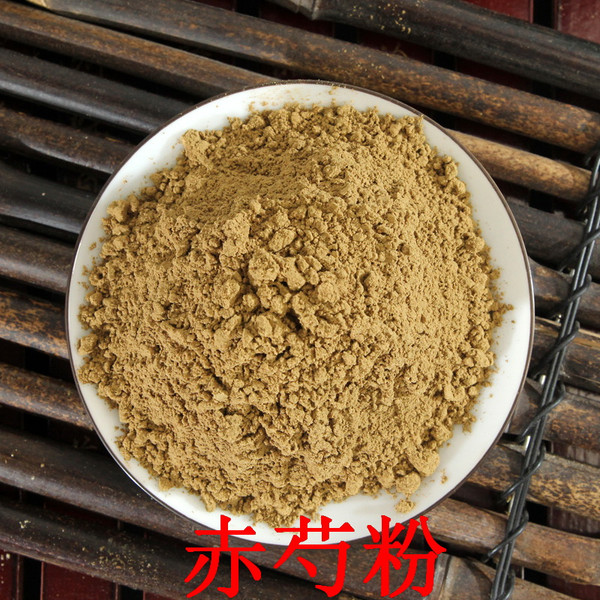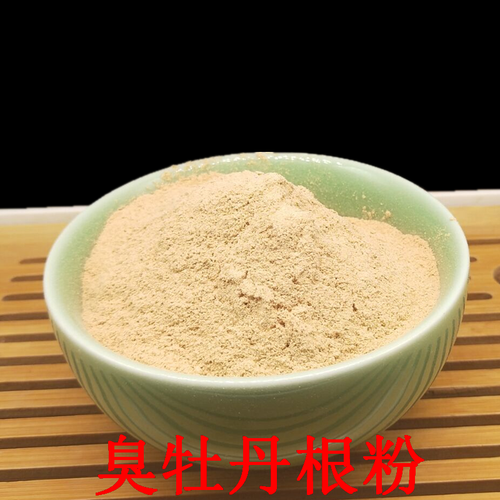Product Overview
Parts used: Dried root
TCM category: Herbs that invigorate the Blood
TCM nature: Cool
TCM taste(s): Bitter
Meridian affinity: Liver
Scientific name: Paeonia lactiflora or Paeonia veitchii
Other names: Chinese peony, Common garden peony
Use of red peony roots (Chi Shao) in TCM
Please note that you should never self-prescribe TCM ingredients. A TCM ingredient is almost never eaten on its own but as part of a formula containing several ingredients that act together. Please consult a professional TCM practitionner, they will be best able to guide you.
Preparation: Remove impurities, wash and soak, cut in thick slices and dry
Dosage: 6 - 12 grams
Main actions according to TCM*: Moves Blood, relieves pain and reduces swelling. Cools the Blood and the Liver.
Primary conditions or symptoms for which red peony roots may be prescribed by TCM doctors*: Hematemesis Nosebleed Conjunctivitis Chest pain Amenorrhea Dysmenorrhea Boils Sores
Contraindications*: Should not be used by those with Blood Deficiency.
Common TCM formulas in which red peony roots are used*:
For rheumatism, muscular pains and spams or lumbago combine red peony roots with notopterygium roots (Qiang Huo), turmeric (Jiang Huang), milkvetch roots (Huang Qi), dong quai (Dang Gui), saposhnikovia roots (Fang Feng), fresh ginger (Sheng Jiang), liquorice (Gan Cao) and jujube dates (Da Zao).
For dysmenorrhea or amenorrhea combine red peony roots with peach kernels (Tao Ren), dong quai (Dang Gui), safflowers (Hong Hua) and motherwort herbs (Yi Mu Cao).
For Blood Stagnation with symptoms of amenorrhea and dysmenorrhea combine red peony roots with mudan peony bark (Mu Dan Pi), peach kernels (Tao Ren), cinnamon twigs (Gui Zhi) and poria-cocos mushrooms (Fu Ling).
For flank pain or pain beneath the ribs combine red peony roots with oyster shells (Mu Li ke), bupleurum roots (Chai Hu) and red sage roots (Dan Shen).
For Blood-Heat, febrile illnesses, clouding of consciousness and/or exanthems combine red peony roots with woad leaves (Da Qing Ye), goldthread rhizomes (Huang Lian), cape jasmine fruits (Zhi Zi), mudan peony bark (Mu Dan Pi) and bugbane rhizomes (Sheng Ma).
Key TCM concepts behind red peony roots (Chi Shao)'s properties
In Traditional Chinese Medicine (TCM), red peony roots are plants that belong to the 'Herbs that invigorate the Blood' category. Like the name indicates these herbs tend to stimulate the Blood flow. In TCM they're used to help the circulation of Blood in cardiovascular conditions or menstrual irregularities as well as to treat acute pains caused by Blood Stagnation. They can also be used to treat Blood Stasis in the case of certain tumors, cysts and hardened clots.
Furthermore red peony roots are plants that are Cool in nature. This means that red peony roots tend to help people who have too much "heat" in their body, although with less effect than a plant that would be Cold in nature. Balance between Yin and Yang is a key health concept in TCM. Those who have too much heat in their body are said to either have a Yang excess (because Yang is Hot in nature) or a Yin deficiency (Yin is Cold in Nature). Depending on your condition red peony roots can help restore a harmonious balance between Yin and Yang.
Red peony roots also taste Bitter. The so-called "five elements" theory in Chinese Medicine states that the taste of TCM ingredients is a key determinant of their action in the body. Bitter ingredients like red peony roots tend to have a cleansing action on the body by clearing heat, drying dampness and promoting elimination via urination or bowel movements.
The tastes of ingredients in TCM also determine what organs and meridians they target. As such red peony roots are thought to target the Liver. In TCM the Liver is often referred as the body's "general" because it is in charge of regulating the movements of Qi and body fluids. It also takes a leading role in balancing our emotions.






